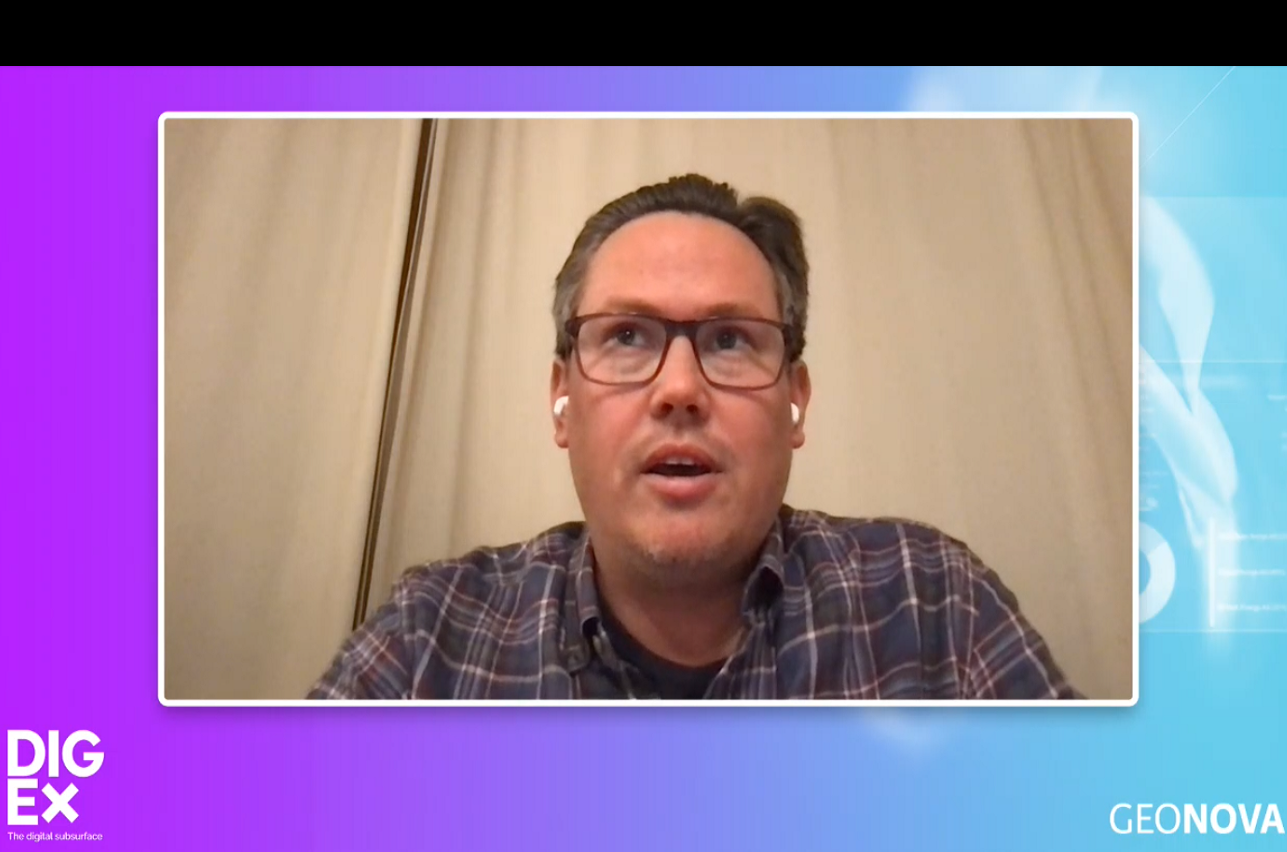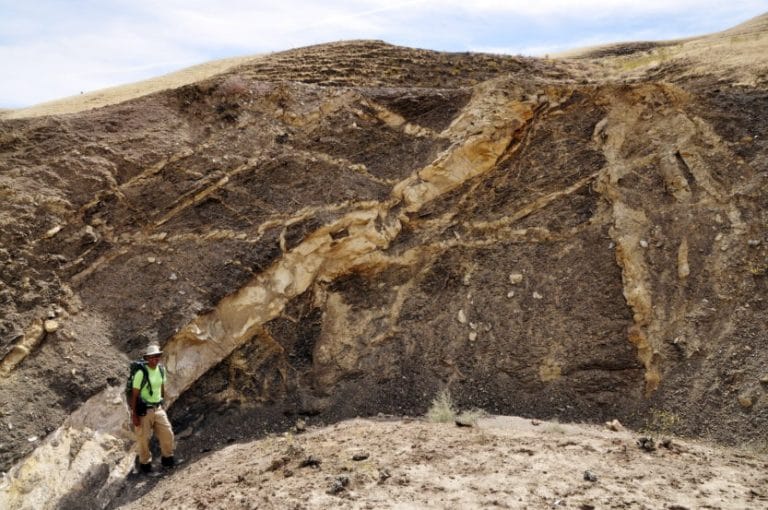“This is an inline from a 3D seismic survey in the North Sea. What may look like noise to the layman, we actually know is the signature of injectites,” says Erik Holtar in Bluware, a company that has a mission “to enable the oil and gas industry to explore the full value of seismic data”.
Ever increasing volumes of seismic data is a huge challenge for interpreters. This is why machine learning (ML) may help decrease the time spent on interpreting a data set, while at the same time improve the quality of the interpretation.
Holtar accepted our challenge to prove that this is the case, and to fully prove his point he selected a data set covering an area with possible injectites. Another reason for selecting this area is that Equinor has made a complete set of data from the Volve oil field (block 15/9, due north of Sleipner Øst) available for research, study and development purposes.

Seismic line crossing the Volve field. In this case the interpreter is only interested in the section above the Jurassic reservoir.
© Bluware
DigEx 2021
The Digital Subsurface
February 17-18, 2021
Step 1
“It’s about time to put on the glasses,” Holtar jokes.
The experienced geologist takes a close look at the white and grey pattern displayed on the screen. As the demonstration will prove, experience is key to a successful outcome.
His first step is to interpret one single line from a seismic 3D cube covering some few square kilometres. Holtar does this using the pen tool selected from the menu (the old-timers would have used a sharp, green-coloured pencil for their seismic paper copies ?). The software is designed to interpret any kind of geological features, and he paints the interval of what he believes delimits this particular sand body. It is certainly not an easy task, as injectites are fairly erratic, to say the least. Also, many of them are too thin for seismic resolution.
Without knowing that such sand bodies do in fact exist, as proven both from outcrops several places in the world and from North Sea fields, the seismic pattern – now coloured in green by Holtar – could mistakenly have been interpreted as noise or shale diapirs.
“Now it is time to relax,” Holtar muses, meaning that he can sit back and zip coffee while the computer is starting to learn by going through the entire 3D data cube with his model “in mind”.

Seismic interpretation of assumed injectites in the Tertiary section in the North Sea made by a human being.
© Bluware
Step 2
A short coffee break, that is, as the result comes out – shown in yellow colours – after only 43 seconds.
“My next task is now to check if I like what the software has done, on this particular line. If I do not like what I see, I do nothing, I leave the yellow colour as it is. However, I use my green pen(cil) in places to complement the interpretation where needed, based on my own judgement.”
Then it is time for another zip of coffee while the machine is once again going through the entire cube teaching itself to do a better job based on Holtar’s input.
Holtar takes the opportunity to stress that geological knowledge is key. Without a model to go by, there is no way that the interpretation will end up with a trustworthy result.

First iteration. Suggestions made by the software InteractivAITM shows up in yellow colours, while the green colour represents the original interpretation.
© Bluware
Step 3
The 2nd round is finished. The less than one-minute job (without any swearing!) turns out a re-interpreted seismic line with a supposedly improved image of the injectites, shown in yellow.
Again, Holtar needs to teach the computer a little bit of geology by using his green pencil in combination with his geological skills.
Another zip of coffee and a little (!) time for small talk.

Second iteration with an improved image of the injectites.
© Bluware

Third iteration.
© Bluware
Step 4, 5, …
“In this way we can go on and on until we are pleased with what we see. Instead we can also go to another inline, or crossline, to see how well the software did on those lines,” Holtar suggests.
In the beginning the result is by no means perfect. With a few iterations, however, the colours seem to reflect the seismic pattern in a very good way, and – being a geologist – Holtar vouch for the result and is ready to accept the interpretation.

The resulting injectite volume for the entire 3D survey based on a combination of geological skill and a software that is able to learn in a matter of seconds.
© Bluware
From the outside, there is no doubt that the interpretation was done in a minimum of time. As for the quality, the interpretation definitely looks reasonable, having outcrops from California in mind.
“We strongly believe that machine learning can be save time as well as improve quality given good geological guidance throughout the interpretation, and – of course – ML is not restricted to injectites, it can used on layers, faults, diapirs and all objects can suitable to isolate on seismic data,” Erik Holtar concludes.
HALFDAN CARSTENS

Workflow for machine learning as per Bluware’s new tool. The number of iterations is in principle unlimited. With proper guidance, however, only a few iterations is necessary.
© Bluware





